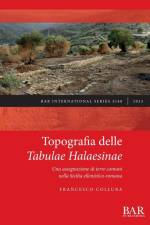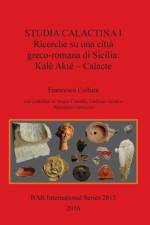von Francesco Collura
232,00 €
With contributions by Sergio Cascella, Emiliano Arena and Benedetto Carroccio.Nonostante il suo nome non ricorra frequentemente nelle fonti letterarie antiche, la città greco-romana di Kalè Akté - Calacte, nel sito dell'odierna Caronia in provincia di Messina, offre innumerevoli spunti di studio che la rendono non meno importante di altri centri antichi più noti e fin qui esplorati in maniera sistematica, quanto a manifestazioni di cultura materiale, tecniche urbanistiche, espressioni artistiche e culturali, produzioni artigianali e attestazioni di occupazione umana diversificata. Nato come probabile "emporion" di Zancle all'epoca della vicenda coloniale di quella città verso ovest a fondare Himera, Kalè Akté lega il suo nome soprattutto a Ducezio, che la fondò a metà del V secolo a.C. Vissuta la fase di maggiore prosperità nella media e tarda età ellenistica, in concomitanza con la nascita della Provincia romana, fu uno dei centri principali sulla costa tirrenica. Le ricerche condotte dall'autore, ad integrazione e completamento di quelle svolte dai pochi altri studiosi che si sono interessati al sito, intendono accrescere la conoscenza non solo di Kalè Akté, ma anche delle vicende e ruoli nella Storia di una qualsiasi città greco-romana "minore" di Sicilia. La presente monografia è la prima di una serie dedicata a Kalè Akté - Calacte e agli altri centri antichi ricadenti nella parte centro-settentrionale della Sicilia (Monti Nebrodi).Despite being mentioned only infrequently in the ancient literary sources, Kale Akte - Calacte, on the site of modern-day Caronia in the province of Messina, offers several hints that it is just as important as other, better known, ancient centres with regard to material culture, urban planning techniques, artistic and cultural expressions, handicrafts and attestations of diversified human occupation. Born as a probable "emporion" (trading post) of Zancle (Messina) at the time of that city's colonial thrust west to found Himera, Kale Akte links its name primarily to Ducetius, who founded the city in the mid-fifth century BC. Through the prosperous middle and late Hellenistic period, coinciding with the birth of the Roman Province, Calacte became a major trade centre of the Tyrrhenian. The research conducted by the author, integrating and completing those conducted by the few other scholars to have studied the city, aims to increase the knowledge not only of Kale Akte, but also of the events and roles in the history of a typical "minor" Greek-Roman city of Sicily. This monograph is the first of a series dedicated to Kale Akte - Calacte and to the other ancient sites existing in north-central Sicily (Nebrodi Mountains).



